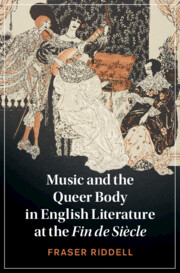Book contents
- Music and the Queer Body in English Literature at the Fin de Siècle
- Cambridge Studies in Nineteenth-Century Literature and Culture
- Music and the Queer Body in English Literature at the Fin de Siècle
- Copyright page
- Epigraph
- Contents
- Acknowledgements
- Introduction
- Chapter 1 Music, Emotion and the Homosexual Subject
- Chapter 2 Flesh: Music, Masochism, Queerness
- Chapter 3 Voice: Disembodiment and Desire
- Chapter 4 Touch: Transmission, Contact, Connection
- Chapter 5 Time: Backward Listening
- Coda
- Notes
- Bibliography
- Index
- Cambridge Studies In Nineteenth-Century Literature And Culture
- References
Bibliography
Published online by Cambridge University Press: 15 April 2022
- Music and the Queer Body in English Literature at the Fin de Siècle
- Cambridge Studies in Nineteenth-Century Literature and Culture
- Music and the Queer Body in English Literature at the Fin de Siècle
- Copyright page
- Epigraph
- Contents
- Acknowledgements
- Introduction
- Chapter 1 Music, Emotion and the Homosexual Subject
- Chapter 2 Flesh: Music, Masochism, Queerness
- Chapter 3 Voice: Disembodiment and Desire
- Chapter 4 Touch: Transmission, Contact, Connection
- Chapter 5 Time: Backward Listening
- Coda
- Notes
- Bibliography
- Index
- Cambridge Studies In Nineteenth-Century Literature And Culture
- References
Summary
- Type
- Chapter
- Information
- Publisher: Cambridge University PressPrint publication year: 2022
- Creative Commons
- This content is Open Access and distributed under the terms of the Creative Commons Attribution licence CC-BY-NC 4.0 https://creativecommons.org/cclicenses/



